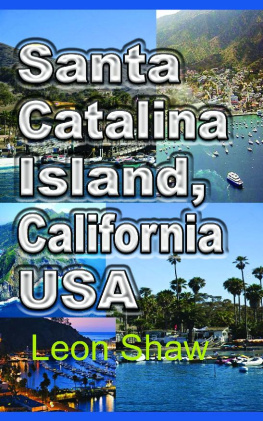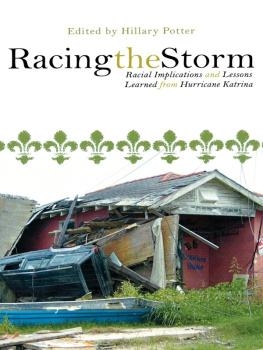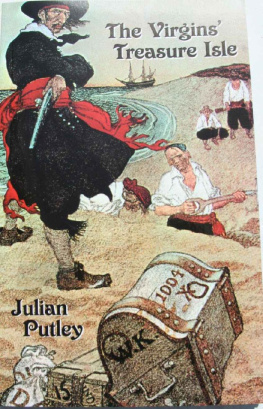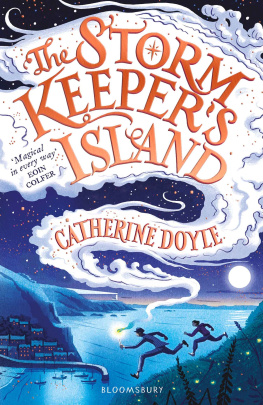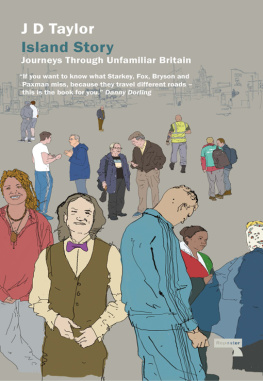APPENDIX: ANATOMY OF THE 1856 STORM
GleeThe great storm is over
Fourhave recovered the Land
Fortygone down altogether
Into the boiling sand
Ringfor the Scant Salvation
Tol for the bonnie Souls
Neighborand friendand Bridegroom
Spinning upon the Shoals
How they will tell the Story
When Winter shake the Door
Till the Children urge
But the Fortydid theycome back no more?
Then a softnesssuffuse the Story
And a silencethe Tel ers eye
And the Childrenno further question
And only the Seareply
Emily Dickinson, The Great Storm is Over
The Last Island storm followed a path all too familiar to inhabitants of the Gulf Coast. Originating in the Caribbean Sea or the western Atlantic Ocean, the tropical depression drifted slowly, predictably to the west. The storm passed through the ninety-mile strait between the Florida Keys and Cuba during the first week of August. Once in the eastern Gulf, the tropical depression angled slightly to the northwest and settled into a path pointed straight at the central Louisiana coastline and Last Island.
Fueled by the warm waters of the Gulf, the tropical storm reached hurricane status within days. By Friday, August 8, the outer bands of the massive storm system began their broad counter-clockwise sweep across the Louisiana shoreline. Currents in the Gulf of Mexico rolled in strongly and steadily from the southeast. Brisk northeast winds began to buffet the island.
Twenty-four hours lateron Saturday, August 9vacationers on Last Island were paying greater attention to the steady northeast winds and heavy swells coming in from the Gulf. By afternoon, few pleasure seekers dared challenge a surf that was growing angrier by the hour. The storm was less than twenty-four hours away.
Early Sunday morning, August 10, the ship C.D. Merwin was positioned to the southeast of the Southwest Pass. It was the first vessel to feel the storms wrath. The Merwin, which had been monitoring the trailing threat, recorded a precipitous drop in barometric readings from 29.9 to 28.2 inches. The mercury level dropped an amazing 1.7 inches in less than twenty-four hoursthe equivalent of a drop in barometric pressure from 1,013 to 954 millibars.268
Captain Merwins log noted the occurrence of a brief calm at nine oclock Sunday morning: The sun shone brilliant, and there was every appearance of clearing off, but the wind suddenly struck the ship from the opposite direction.269 By the time the eye of the storm passed overhead, the Merwin was south of Southwest Pass and one hundred and twenty miles east of Last Island.
Ten miles to the west of the C.D. Merwin was the storms second victimthe Manilla. William Rogers, skipper of the Manilla, was on the final leg of a two-month-long trans-Atlantic voyage. It was a final stage that had been halted by the Manillas inability to cross the bar and enter the safety of the Southwest Pass and the Mississippi River. Sitting outside the bar, Captain Rogers and his vessel were swept up by the awesome storm and driven westward toward Timbalier Island, where it broke apart and sank.
Throughout the morning hours, other ships followed suitamong them, the Bowditch, the Ellen, and a large coastal steamer seventy-five miles to the west. The 898-ton pride of the Morgan Line, the Nautilus, was rolling about in the rough seas near the light boat at Ship Island Shoal. Capt. John Severin Thompsons ship was less than ten miles from an imperiled Last Island. Early Sunday morning, August 10, the Nautilus capsized and carried more than eighty crew and passengers to their watery graves. Only one man survivedsecond steward, Jim Frisbee.
One after another, vessels along the Louisiana coastline and on inland waterways were swamped or driven aground. As the eye of the hurricane closed in on Last Island, its powerful northeast gale winds increased. Shortly after noon on Sunday, the waters of Caillou Bay began rising, flooding the bay side of the island. With each passing hour, the waters from the bay pushed their way up the slight slope on the north side of the island and toward the cresttoward the hotel and summer homes situated less than two hundred yards awayand more than four hundred frightened pleasure-seekers.
By mid-afternoon on August 10approximately four oclockthe center of the hurricane passed a few miles to the west of Last Island. For hours the storm had been hammering the island with its violent northeast and east gale windswinds that were pushing the waters of Caillou Bay closer and closer to the crest of the island.
Suddenly the winds subsided and an eerie calm hung over Last Island. The eye was passing just to the west of Raccoon Point. Within minutes the powerful storm resumed its attack, this time from the southeast and south. The brief pause was nearly identical to that experienced earlier Sunday morning by the crew of the C.D. Merwin.
The end for Last Island came from the south. The popular resort had been pounded relentlessly for hours by a fierce one-two punchat first by strong northeast winds and the encroaching waters of Caillou Bay. Once the eye of the storm passed to the west of Last Island, the direction of the storms assault shifted abruptly. The fury of the storm was now descending from over the Gulf waters to the south. The hurricanes 140-mile-per-hour winds further weakened dozens of already severely damaged structures.
The last moments of Last Island came swiftly and violently as wind-driven waves rode atop a massive wall of water and crashed easily across the lowlying island. A massive nine-foot storm surge leveled virtually everything in its path, scattering timbers, furniture, debris, and bodies for miles. While the earlier northeast winds and flooding from Caillou Bay had done considerable damage to the hotel and summer homes, it was the Gulf surge that decimated the island and claimed most of the lives. Weakened structures fell like houses of cards.
Scientists at the National Oceanic and Atmospheric Administration (NOAA) have analyzed available data and estimated that the Last Island storm generated a surge of from 8.4 to 9.7 feet. Given that the highest parts of the island were only five or six feet above sea level, it is clear that the entire island was completely inundated at the most critical of moments. The NOAA storm surge model is consistent with eyewitness accounts, which linked the collapse of the hotel and most summer homes to the massive wall of water that rolled in from the Gulf.
The National Weather Service (a department of NOAA) defines a storm surge as follows:
Simply water that is pushed toward the shore by the force of the winds swirling around the storm. This advancing surge combines with the normal tides to create the hurricane storm tide, which can increase the mean water level 15 feet or more... wind driven waves are superimposed on the storm tide. This rise in water level can cause severe flooding in coastal areas, particularly when the storm tide coincides with the normal high tides.
Because much of the United States densely populated Atlantic and Gulf Coast coastlines lie less than 10 feet above mean sea level, the danger from storm tides is tremendous. The level of surge in a particular area is also determined by the slope of the continental shelf. A shallow slope off the coast will allow a greater surge to inundate coastal communities.
This explanation suggests that Last Island was doubly impactedthe island at its highest point was no more than five or six feet above sea level; in addition, the slope of the continental shelf in that area is very gradual.
At about five oclock Sunday afternoon, everything went to pieces under the weight of the storm surge. When that occurred, hundreds of people on the islandthose not crushed by the collapse of buildings or drowned by the massive wall of waterwere thrust into a maelstrom of chaos and confusion.


